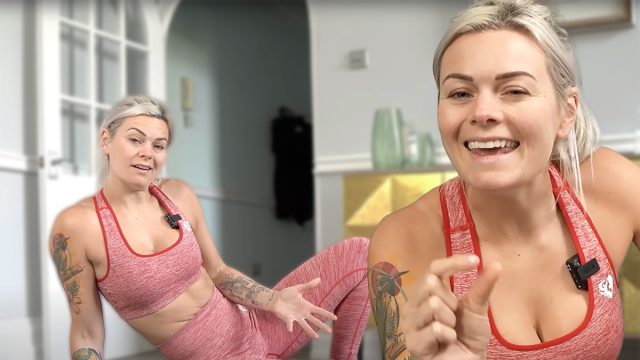3 Biggest Stretching Mistakes Mobility Expert Says You Must Stop Today

We've all been there—dedicating precious minutes to stretching, hoping to become more flexible, yet seeing no results. If this sounds familiar, you're not alone. Many of us have been approaching stretching all wrong, but that's about to change. In this article, mobility expert Liv reveals the science behind effective stretching and how to avoid common pitfalls that might be holding you back.
Liv, a renowned mobility specialist who combines strength training with yoga in her innovative "Yoga Rebel Method," has helped thousands transform their flexibility through her mobility-based approach. With over 500K YouTube subscribers following her journey, she's dedicated to helping people achieve their mobility goals through proper technique and understanding. Read on to discover the game-changing mistakes you might be making and learn how to fix them for real results.
The Nervous System: Your Hidden Stretching Partner
"The stretch reflex is like a protective guard in each muscle," Liv explains in her post. "When triggered, it causes the muscle to resist stretching—which is exactly what we don't want." This natural response can either work for or against you, depending on how you approach your stretching routine.
Why Rushing Into Stretches Sabotages Your Progress
According to Liv, approaching a stretch too quickly is like rushing to pet a nervous dog—you'll only trigger defensive responses. "You need to give your muscles and their respective nervous system time to adapt to the sensations of that stretch," she emphasizes. This allows the stretch reflex to relax, creating an opportunity for genuine flexibility gains.
Master the Three-Phase Approach to Stretching
Liv recommends breaking down each stretch into three distinct phases:
1. Begin with a very mild stretch to connect mind and muscle
2. Move to a mid-level intensity with a deep exhale (hold for 10 seconds)
3. Progress to your threshold, maintaining the position for at least 20 seconds
The Truth About Stretch Duration
"There's a lot of nuance behind how long you should hold a stretch," Liv notes. While various studies support different timeframes, she recommends newcomers maintain each stretch for no less than 30 seconds. This duration allows proper muscle adaptation and meaningful flexibility gains.
Why Your Internal Clock Is Deceiving You
Most people dramatically underestimate how long they're holding stretches. As Liv points out, "Just like when we were kids counting too quickly in hide and seek, we tend to rush through our stretch holds." This impatience can significantly impact your progress.
The Importance of Proper Timing
"Don't think of stretching as the side dish to your workout," Liv advises. "It's part of the main meal." She recommends using a stopwatch or timer to ensure you're giving each stretch its full duration, especially when working on multiple muscle groups.
Understanding Stretch Intensity
Just as lifting a one-pound weight won't build muscle, stretching without proper intensity won't improve flexibility. "A mild stretch where you can just about feel the muscle isn't enough intensity to stimulate change," Liv explains. The key is finding the sweet spot between comfort and challenge.
RELATED: I Got Into the Best Shape of My Life at 50 by Following These 6 "Basics"
Finding Your Edge: Comfort vs. Challenge
Liv suggests a practical way to gauge proper stretch intensity: "You should be at a point where having a conversation really isn't something you want to be dealing with, but you can still control your breathing and relax specific body parts." This balance ensures you're pushing yourself enough to see progress while avoiding injury.
The Role of Mindfulness in Stretching
"Learning the difference between pain and discomfort is a journey that's individual for each of us," Liv shares. Pay attention to your body's signals: if you can't shake that inner feeling of panic despite efforts to stay calm, you've likely pushed too far.
Your Path to Better Flexibility
Improving flexibility is about working smarter, not just harder. By avoiding these common mistakes and following Liv's guidance, you're setting yourself up for real, lasting progress in your flexibility journey. Start implementing these changes in your next stretching session, and experience the difference proper technique can make. And if you enjoyed this article, don't miss these 8 High-Protein Foods with Nearly Zero Calories That Melt Fat.




